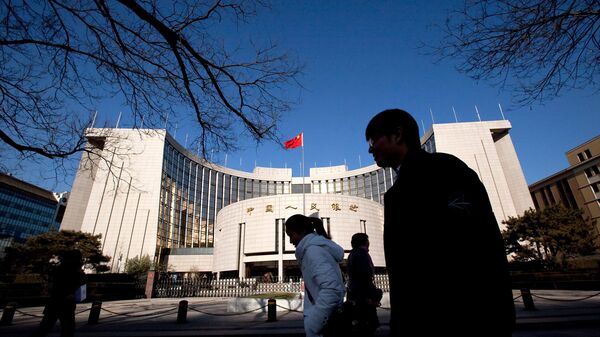India, like Brazil, has for long been a rising power, a country of the future. Its growth accelerated after 1990, along with that of China. China, however, has left India far behind. Going forward, can India shed its perpetual ‘country of the future’ image and become a developed economy, escaping the middle-income trap? How might it grow relative to China in the quarter century that will bring up 100 years of independence?
One could look at three scenarios, beginning with a business-as-usual baseline, where the economy trudges along its present growth path. Second, a higher growth trajectory might be achieved through a combination of good policy, leadership and institutional integrity. Finally, there is an optimal ‘Goldilocks’ growth path that the Indian economy has achieved in the past, but might find difficult to sustain over an extended period. These trajectories are derived from spreadsheet simulations, with the baseline set at the last decadal annual average (2011-12 to 2021-22) of 5.9 % in current international dollars, according to the IMF World Economic Outlook database. Central Statistical Office data shows that India’s average nominal GDP growth over this period was 10.6%, with the average GDP deflator at 5.1%, yielding a real average annual growth rate of 5.5%, slightly lower than the growth in current US dollars. The higher growth rate of 5.9% is used for the baseline projections. The current World Bank thresholds for ‘upper middle’ and ‘high income’ ($4,255 and $13,205 per capita) classification are used for comparisons. For long-range projections, the current thresholds are inflated by 2% annually, the US Federal Reserve’s target inflation rate.
This simulation indicates that at India’s current rate of growth (5.9%), we would achieve a $5 trillion economy by 2029-30 (in current dollars; its size is already $10 trillion in terms of purchasing power parity), and a $10 trillion economy in the ‘upper middle-income’ bracket by 2041-42. But we would still be far from joining the ranks of high-income countries by mid-century, by when our demographic dividend would be exhausted.
Comparisons between China and India are often made because the two populations are similar in size, both have been prosperous civilizational peers through much of history, and were economically on par till around 1990. Geopolitically, India is seen as the only counterbalance to a rising China. But China has moved so far ahead in three decades that the question of whether India can ever catch up with its civilizational peer is up in the air.
Economic growth accelerated in both countries after 1990, but China’s was much faster, and for longer. India’s output now is where China’s was in 2006-07, while China is on the verge of becoming a high-income country. In 2006-07, India’s per capita income was about 38% of China’s. Today, it is just 18%. If India were to grow at its average of 2011-12 to 2021-22, it would reach China’s current level of $17 trillion around mid-century. In three decades, from rough parity, China has moved ahead of India by about three decades. How far ahead might it move in the next three?
The past is not always a good guide to the future. Might the gap narrow, as China is slowing while its demographic profile and geopolitical environment turn adverse and its policy framework is increasingly exposed to the errors of one-person rule? If China’s growth were to slow to 4% and India’s holds up at 5.9%, our economy would become 40% of China’s (up from 18%) by mid century. It would cross 50% if India grows at 7%.
In view of our low base relative to China’s, our economy needs to grow consistently at 8-9% over 2-3 decades for India to gain geopolitical significance on the global chessboard. That would assure New Delhi at least the role of a rook; it would take a higher rate for longer to become a queen (like China). As of now, India is more of a knight or bishop.
At 8% annual growth, India would become an upper middle-income country by 2033-34, and reach China’s current economic size by 2043-44, but would still not join the ranks of developed countries by mid-century. However, if India were to grow at the Goldilocks (and currently unlikely) rate of 9%, and China slows to 4%, India’s economy would exit middle income but still be only 70% of China’s size by mid-century. India grew at this higher level briefly during the first decade of this century, but we have been nowhere near it since. In that stretch of hyper-growth, all three engines—consumption, investment and exports—were firing strongly. Growth began to stall once the investment and export engines stalled. While consumption is seeing a revival, private investment and exports remain weak. India’s gross capital formation as a share of national income has declined over the past decade, led down by a private investment drop. Our exports/GDP ratio is also lower. The prospect of regaining a sharp export incline has also dipped with countries turning inwards as globalization weakens.
Trend-line economic projections are useful as they offer forecasts of geopolitical outcomes. In hindsight, relative movements in income throw some light on why China is no longer willing to accept the geographical boundaries it agreed with India in the 1990s when the two economies were roughly on par. Long-range projections, however, often prove wrong, as many non-trend-line factors join the equation. While recent growth trends indicate that our earlier growth potential may have been set back, alternate scenarios and caveats are integral to such projections, since even the baseline scenario is by no means guaranteed.
Alok Sheel is a retired Indian Administrative Service officer and former secretary, Prime Minister’s Economic Advisory Council.
Download The Mint News App to get Daily Market Updates.
More
Less
#Aim #bestcase #scenario #catching #China
